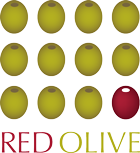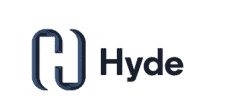In brief
The Hyde Group is one of the largest housing associations in and around Greater London. It provides homes for 100,000 residents in 50,000 properties across the capital, south-east, east of England and East Midlands.
Established in 1967, its focus on tenants who have difficulty finding private sector accommodation has seen it undertake several regeneration projects that have significantly improved the housing stock on its books. This continues, with its strategic plan for the next 30 years devoted to improving its tenants’ living conditions, exploring opportunities to reduce the carbon footprint of its estate, and ensuring its residents have homes that meet their needs for the long term.
Data – and its collection, analysis and management – is one of the most important tools that will help it deliver on this plan. However, with more varied metrics coming onstream all the time, and a significant amount of legacy data already in its possession, the group recognised an urgent need to be smarter about how it analysed and shared the information that underpinned its business.
Tracking these metrics, among others, helps The Hyde Group to understand how it is performing as a business, how it is servicing its tenants and how it is interacting with key suppliers.
It also gives staff the ability to monitor that the organisation’s compliance with regulatory requirements by making sure the metrics are always relevant to the environment within which it operates.
You can download a PDF of this case study here. Or watch Jefferson and Barry’s talk from the Salford Professional Development’s Social Housing conference here.

Presenting a true picture of what is going on to the whole organisation
The Hyde Group uses data to improve its tenants’ lives. It has made significant efforts to develop an information governance programme, working to better understand its data management maturity and refining its data handling practices – with the aim of becoming more efficient, taking advantage of new technologies and being more open in its operations, both in-house and out. An important aspect of the programme was a review of the performance management approach and how key performance indicators were being used to monitor and improve the business.
“In terms of the previous approach to performance management, everything was adequate,” says Barry McNulty, director of analytics at the Hyde Group. “But we knew we could be better, and more efficient, and we recognised that we needed to refresh our approach. The old ways of working in terms of the metrics, and how they worked inside a performance management framework was fine. What was less fine was the way our metrics were presented and shared with internal stakeholders.”
The Hyde Group’s workflow would have been familiar to many similar organisations. Data was updated periodically, but was still largely static, and often shared as PDFs, which can only ever present a snapshot. Barry’s vision was to make the data more useful, not to mention more accessible, by making it interactive.
“We also wanted to make sure that there was a way for internal stakeholders to see more information about the metrics themselves,” he says. “We needed to attach descriptions, explain how the data was defined, and highlight any logic that was attached to it, from where it was sourced and who owned it.”
The solution was a visual aid that presented the Hyde Group’s performance management metrics “at height”, in Barry’s words. By that, he means an overview, providing a comprehensive picture of all aspects of the organisation’s performance in one place.
After considering a handful of partners, they chose to work with Red Olive to implement the dashboard using Microsoft Power BI.
The technology-last approach
Red Olive was contracted to the job in early March with a two-month target for completion. It was an unmissable deadline, as the system needed to be ready for the first fiscal report of the financial year. The ability to work to such a tight schedule was one of the factors that made Red Olive an attractive proposition.
But the work began not with the installation of back-end software, or even a deep dive into the data already in place. Instead, it was a series of discussions about best practice.
“Technology is one of the last things you should be thinking about when it comes to the way that you treat and approach working with data,” says Barry. Instead, it’s important to understand how the business works, how it uses its data, and where the latter could better inform the former.
Before rolling out its KPI dashboard, metrics were routinely shared within the Hyde Group on a regular, but periodic basis, in the form of PDFs, compiled using data from various departments and circulated internally. Although these presented an accurate picture of each element at the point they were compiled, the results were a series of static overviews. Some elements within them could date more quickly than others, which meant it would not be easy to spot possible trends or to head off developing issues between each update.
“We started by asking ourselves a series of questions. What is our approach to data management? How do we want to treat our data? What kind of organisation do we want to be when it comes to data? What kind of an organisation are we right now? What do we need to change to get where we’re heading?”
The answers to many of these questions highlighted a series of procedural requirements, but some also drew the Hyde Group’s focus towards staffing and industry regulations.
As Barry explains, “there’s a higher degree of expectation from the regulator that organisations are managing data properly, which has always been the case, but it has increased. When you’re submitting data in response to regulatory need (ie SDR, housing ombudsman) you want to be able to respond to any queries with speed and confidence. You need to be able to go from the top level of aggregation (summary at local authority for example) down to the bottom (individual property), and get the right eyes on it in terms of your internal SMEs who are closest to the operations that data relates to. You’re giving internal colleagues the right level of data to provide that response.”

Using data to make better decisions
The Hyde Group’s business model generates a steady stream of data. Some of this, like invoices and income (largely rent in the Hyde Group’s case), is common to all organisations, but much of it is bespoke.
Many housing associations are adopting new systems and are increasingly deploying Internet of Things (IoT) technology within their properties. This allows them to gather data passively and use it to forecast upcoming issues so that proactive maintenance can be carried out before equipment fails.
“As soon as you start to use that kind of technology, you are working with much larger data volumes,” Barry explains. “You move from periodic snapshots to a constant stream. So, you must ask yourself what approach you want to take, what methodology you are going to use to gather, store and index it, and how it should be analysed, and ultimately be clear what you’re actually going to use it for.”
Trustworthy and accessible
The ultimate aim for the Hyde Group is that all data is available through a single data platform and is accessible to any person or service that has authority to access it. While they are building toward this, the dashboard is a step along the road for performance measures and the way that staff can interact with KPI analysis.
The analytics should be easy to read, without requiring extensive training, and be a step along the road to business self-service. The decision was therefore made to break down the business into core functional areas, and present performance within each as a numeric score – displayed as a percentage of ‘ideal’ performance – and a graph, on a coloured background. Should performance fall below optimum levels, this would change from green to amber to highlight where the business was failing to meet a specified KPI. The KPIs themselves had already been defined in response to the Hyde Group’s Information Governance Programme. This had been reviewed by a major management consultancy and signed off by the Hyde Group’s Executive Leadership Team.
Once implemented, clicking any metric would expose metadata describing the data itself to give it context.
“Drilling down like this shows us which staff member owns any particular KPI,” says Barry, “and whether somebody else provides it for them. How is it produced? Is the metric manual or automatic…?”
In other words, the dashboard makes it clear how trustworthy every single metric is. This is particularly important when evaluating any undershoot on the stated KPI. While automated metrics are unarguable except in the case of a malfunction, manually entered figures may have been mis-keyed. Underperformance in any manually tracked element will have a greater health warning and level of provenance, and may take more effort to analyse for accuracy before taking remedial measures.
“KPI owners have the opportunity to add their own commentary, too,” Barry says. “They can explain why things are good or bad, highlight any mitigations and so on. You can see what’s being done at any point, which saves a lot of phone calls and following up.”
Red Olive performed the development work alongside the Hyde Group’s own team, so that once the project was completed, the Hyde Group would have intimate knowledge of its inner workings. This was important as one of the measures of its success, defined at the outset, was that the project should be left in an open state, so the Hyde Group’s own team could implement changes itself. Red Olive is happy to work this way, mentoring and developing client staff. As a result, the dashboard has undergone several changes since it was first rolled out that have been implemented in-house.
“That was important for us, for obvious reasons, partly because we wanted to save ongoing costs, but also partly as a means of upskilling our own staff so they could then take some of what they have learned and apply it to other parts of their work,” Barry explains. “Power BI was a very new tool for us, and we wanted to get more use out of it – so this was good timing.”

The data dividend
Barry says that the Hyde Group’s data is now more visible. “We’re classifying our data so that we can be systematic about it. When someone describes ‘property’ or ‘customer’ data we know the attributes that fall under those banners. And because we’re clear and consistent about how we describe data this proliferates across the organisation as we’re all talking the same language..”
“There’s still work to be done,” he goes on to say, “but this effort on data management pays for itself when you consider factors such as saved administration time, better ability to migrate data to alternative systems, better accuracy, the list goes on. There is also the value associated with more complex situations in advanced analytics where you can better predict events, automate processes and make use of unstructured data trapped in documents. This is only really feasible if you define your data, and only sustainable if you keep looking after it.”
Barry sees data as a business asset that should be driving value as well as supporting the smooth functioning of a business. With the onset of artificial intelligence and machine learning applications becoming cheaper and easier to use for all types of business, only those who are in control of their data will be able to take full advantage. At that point, says Barry, the question is how much we can collaborate in the sector to drive the value together.
Good business practice makes a good business
While housing associations like the Hyde Group exist to ensure everyone has somewhere warm, safe and secure to live, they operate within a commercial environment, just like any other business.
“We need to track a wide range of operational measures, like how much rental income we took in last week or month,” explains Barry, “how many phone calls we received complaining about something, how many repairs we have performed in the last seven days, and so on.”
Tracking these metrics, among others, helps The Hyde Group to understand how it is performing as a business, how it is servicing its tenants and how it is interacting with key suppliers.
It also gives staff the ability to monitor that the organisation’s compliance with regulatory requirements by making sure the metrics are always relevant to the environment within which it operates.
The value of such metrics was thrown into sharp relief following the fire at London’s Grenfell Tower. While the fire was caused by a faulty refrigerator, the form of cladding used on the outside of the building helped the blaze to spread, with devastating consequences. Following an enquiry, building owners were obligated to replace non-compliant cladding where it existed in their properties.
The Hyde Group therefore needed to use its existing data sources to discover which of its buildings were affected. Looking ahead, data could likewise be used to track the progress of the work required to make the properties safe.
How could better business intelligence transform your organisation?
Organisations routinely hold more data than they realise. Much of it is poorly exploited because it is not well indexed, is stored in inflexible formats, or has been siloed – effectively isolated from the rest of the business because it resides within one particular department.
Making data more accessible is key to improving business performance overall, giving organisations a better understanding of their financial wellbeing. It reduces costs by avoiding duplication of research, minimising wait times and allowing for preventative maintenance. Every solution is bespoke.
To discuss your requirements, call Red Olive today on 0203 745 9790 or email the team at [email protected].

